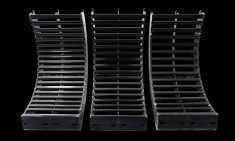Test plots seeded this April ducked frost but didn’t gain much of a head start because soil temperatures were too low
If you ask a group of farmers what’s at the top of their wish list in early March, many would say an early spring, because it eases the logistical challenges of seeding large acreages and reduces the odds of being caught by an early-autumn frost.
This year’s exceptionally early spring had the phones ringing off the hook at the offices of Manitoba Agriculture, Food and Rural Initiatives.
“We had a lot of farmers inquiring if it was too early to seed canola at the end of March,” provincial oilseed specialist Anastasia Kubinec told the opening day of the Manitoba Crop Diagnostic School (CDS).
Read Also

Local farm businesses, groups look forward to Manitoba Ag Days 2026
Most of agriculture is seemingly at Manitoba Ag Days each January: Manitoba agribusinesses and farm groups look forward to connecting with farmers at the 2026 show.
“My reaction was, ‘Come on guys, it’s only March.’ But that led us to an interesting question: Is there such a thing as seeding too early? So we decided to run some demonstration plots to show what might happen.”
CDS organizers planted sunflowers, corn, soybeans, canola, wheat, flax, peas and beans on four dates: April 5 and 19, and May 4 and 17.
The CDS site near Carman typically sees the last hard frost (-2 C) somewhere between May 21 and May 25. But this year it came April 26 — which delivered some unexpected results.
“As you can see, some of our earliest planting dates are among the better-looking plots,” Kubinec told participants, while quickly adding the real story is a bit more complex.
“In most of the crops you’ll also see that there’s very little to choose from between the earliest and second-earliest seeding date,” she said.
Seed just sat
That’s because the earliest crops were sown into ground that had to warm significantly before the seed germinated and seedlings emerged, Kubinec said. Soil temperature for both the April 5 and April 19 plantings was 5.3 C, and it was only by May 4 that it had warmed up to 9.8 C.
That meant the earliest canola seeding date, for example, saw the seed sit in the ground nearly three full weeks before emergence, while the second earliest saw emergence after just two weeks. The two seeding dates in May saw emergence in just over a week.
“Soil temperature needs to be at a minimum of 6.5 C to 7 C to enable germination,” Kubinec said. “That means the first two treatments were really only getting out of the ground at roughly the same time. In light of this, the question is whether it’s worth the risk to seed that early. I’d say probably not.”
So if another unusually early spring comes along in the next while, farmers might want to bear this in mind and resist the temptation to get out as soon as possible. Waiting just a bit longer won’t likely cost you anything in terms of production, but will reduce risk.















